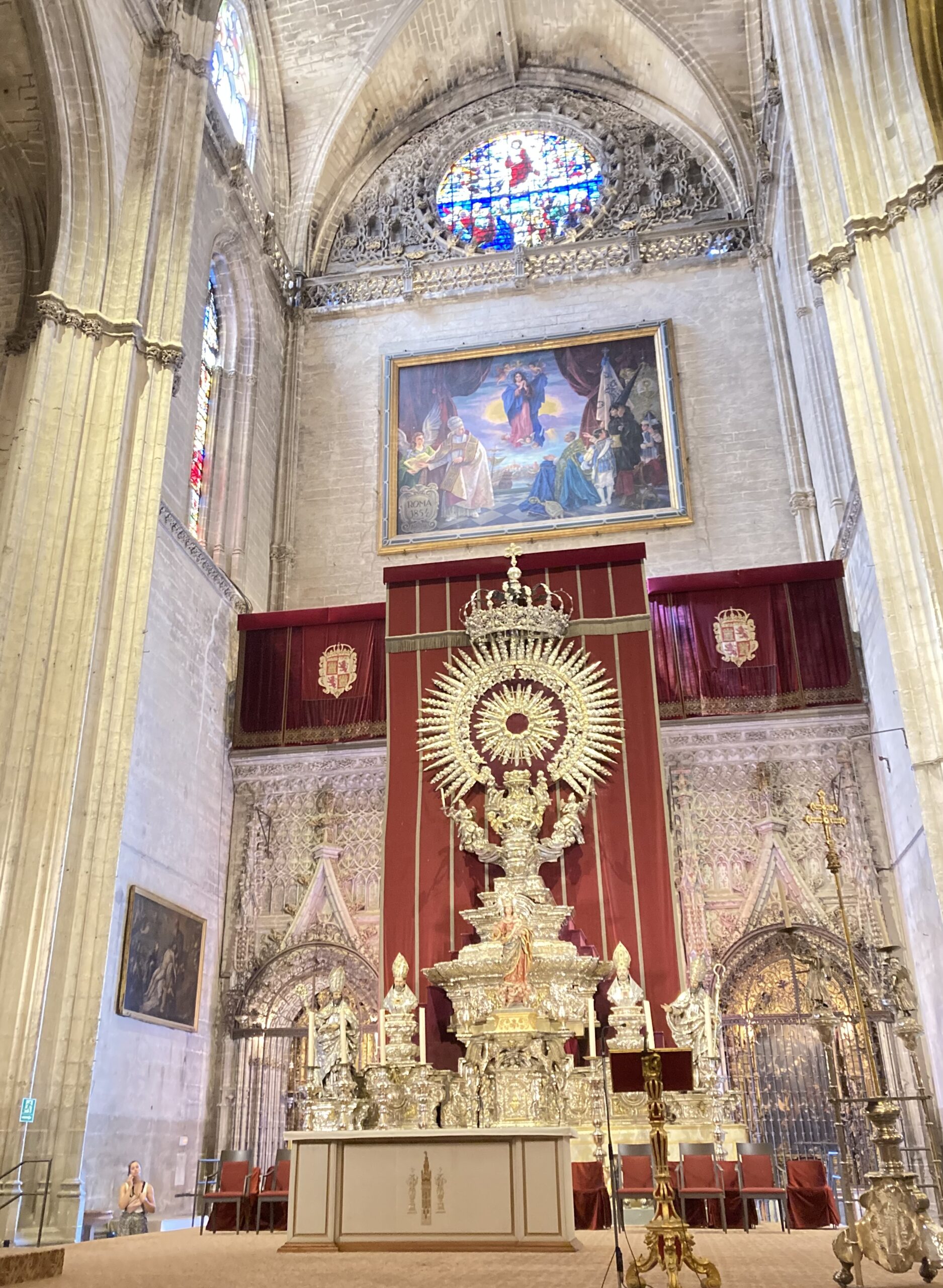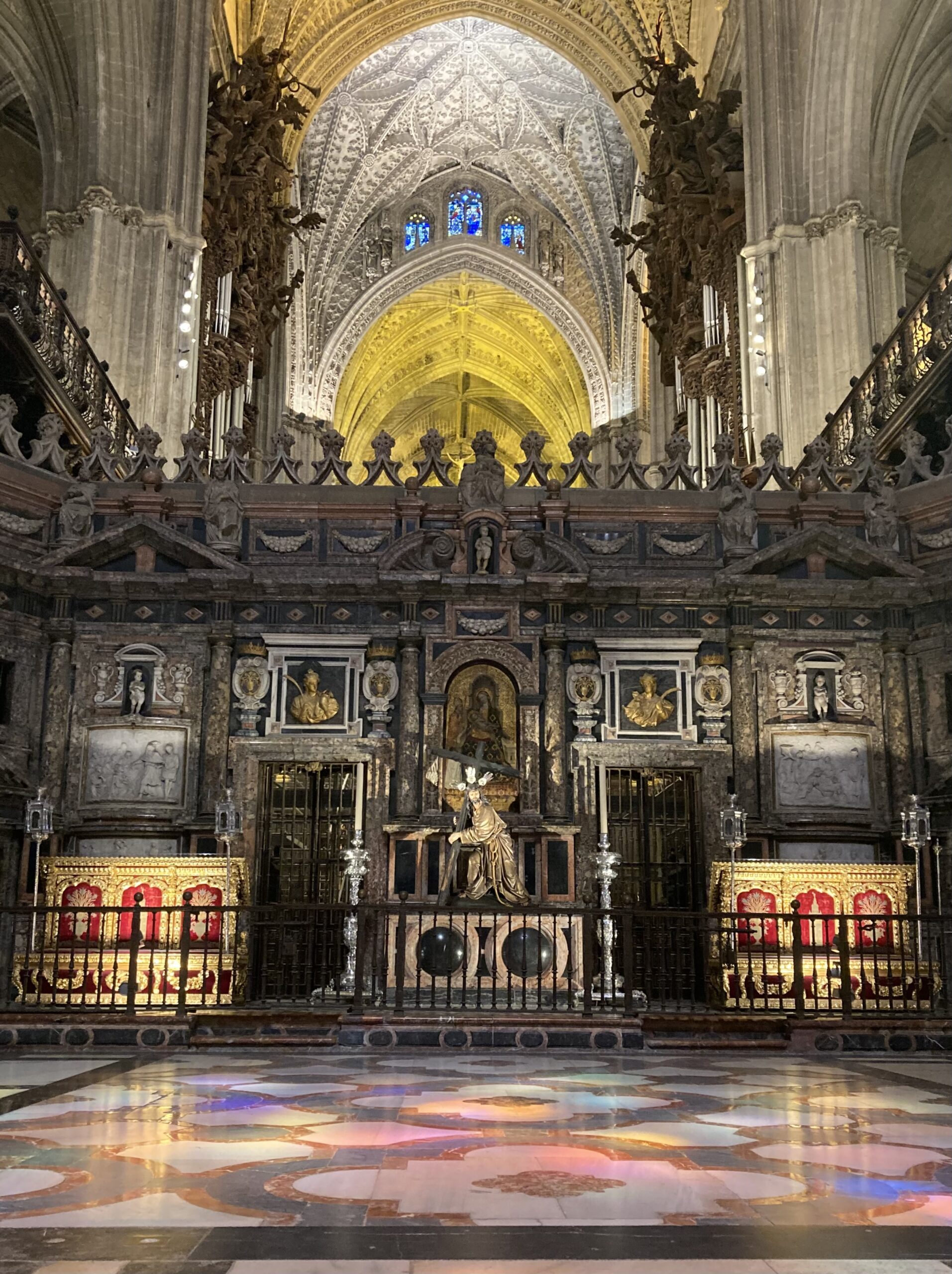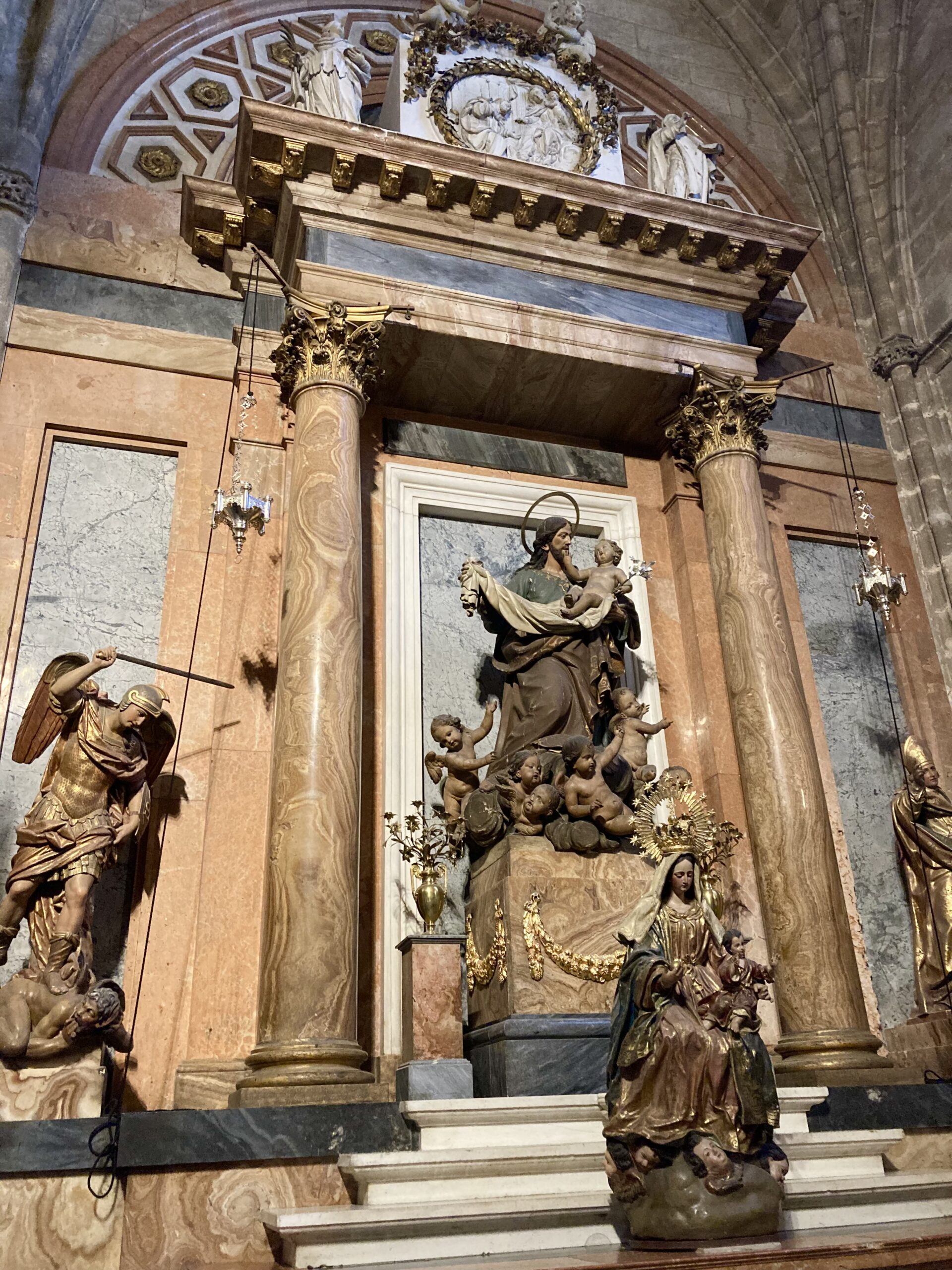Written By: Sally Zinsner’25 (Session 2)
“Catedral de Santa María de la Sede,” or the Cathedral of Seville, is the third cathedral we have visited in Spain and the third largest Cathedral in the world. The expansive structure and magnificent 104.1m bell tower, known as La Giralda, can be seen on numerous streets throughout Seville. Upon entry into the Cathedral, a beautiful inner garden draws visitors inside. The garden has meticulously placed fountains that resemble Islamic designs and the Cathedral’s Visigothic origins that can be found all around Spain. This feature comes from the time in which Muslims controlled the now Cathedral and the then mosque; the Catholics later overtook it but kept some Islamic elements. We learned from Juan and Professor Lokos that Muslims used the fountains to wash their hands and feet before entering the Cathedral, which parallels when Jesus cleaned the feet of his twelve apostles on the night of the Last Supper. The act symbolizes a want of purity that transcends the believed religion.

The Last Supper is a historic Catholic event that has been frequently depicted by famous artists. However, there are no paintings of the Last Supper in the Cathedral. This surprised us because of the subject’s wide prevalence in churches worldwide and in art. Instead, we were met with images of the beheaded John the Baptist and an abundant focus on Jesus, Mary, and symbolism of the Sacred Heart. Many of the side chambers and chapels demonstrated this focus on the Holy Family. This could be explained by the fact that the families who donated money for the completion of the chapels, separated from the main chamber, wanted to represent their family by portraying the image of the Holy Family. The practice assimilates to the present day with donors donating to emblemize their passion for a school or group and plant their name within it.
We then as a group, ascended the 37 flights of ramps to reach the top of La Giralda. The windows provided a vast view of the city including Plaza de Toros, used for bullfighting and the Guadalquivir River, a historic port for transportation. La Giralda also offered us a little scare as one of the numerous bells above us rang loudly to signify the half hour mark.
After a much easier descent from La Giralda, we could not help but notice the similarity between the Cathedral of Seville and the Cathedral of Toledo, which we visited last week. The main altar in Seville sat amidst hundreds of gold-plated religious figures adjacent on the wall, which we also saw in Toledo. Then, directly across from the main altar sat the choir box with surrounding chairs showing carvings of animals and biblical figures, another similarity to Toledo. Further, both Cathedrals have a large portrait of St. Christopher to the side of the main altar area utilizing St. Christopher as a “protector.” However, the Cathedral of Seville has a unique element that differs — next to the portrait lies the remains of Christopher Columbus. Columbus had been buried in the Dominican Republic but was later moved to the Seville Cathedral where his tomb is guarded by St. Christopher and large sculptures of soldiers.

Another differentiating element of the Cathedral of Seville was the “Altar de Plata,” or the Altar of Silver. The Cathedral is filled with gold painted sculptures and gold sacristies, but makes this one main altar decorated with silver as a focal point. Silver offers a biblical connotation with daily trade and commoners. The use of silver shows there was a widespread belief in the purpose of the Cathedral and that religion embraces all social classes. Showing different classes balances the presence of the family donated, gold plated chapels with an altar for the common people who believed in the same religion and constructed the Cathedral.
Intricate detail is something the group is constantly discussing in each visit to a cathedral or historical location. The walls of the Seville Cathedral are covered from top to bottom with unbelievable design. In the Seville Cathedral, the Holy Family was the main message and placed at eye level. However, if you look up to the very top of the Cathedral, you see stained glass windows portraying numerous saints. Although difficult to discern because the images are so far away, the beauty is breathtaking, and it is worth the eye strain.
The Cathedral of Seville and La Giralda are magnificent structures constructed with intricate detail and passion. As a Catholic baptized at a young age and one who has grown up in the Church, seeing the beauty of these Spanish landmarks has been an incredible opportunity. Understanding the toil and passion it took to construct the structures centuries ago has had a profound impact on my faith.


